The American essayist Hal Borland once wrote “If you would know strength and patience, welcome the company of trees.” Trees grow from tiny shoots into saplings, and then into mighty trees as old or older than the oldest humans. But even through all the slow and steady growth and change, the general aspect of a forest stays the same. So if you want to ponder the universality of humanity through the ages, a forest is the perfect place to go. If the first humans who settled North America unknown centuries ago were to find themselves in an urban area today they would be utterly lost, but in a forest, they would still feel right at home.
Like many people, I think fall is the ideal time to enjoy a walk in the woods. For one thing, the cool air keeps you from getting overheated, even on a long hike. But of course the best part is admiring the the changing leaves. During spring and summer, all trees seem to merge together into an amorphous mass of green, but when they change into brilliant yellows, oranges, and reds in the fall, their individuality comes on full display. Meanwhile, the unchanged evergreens provide a pleasing complement to their flamboyant deciduous cousins. A walk gets you a backstage pass to the show, bringing you up close and personal with each individual tree.
I went out for a walk in the woods of my own yesterday to one of my favorite spots, Laurel Hill State Park near Somerset. Less than a century ago, this park was nothing but worthless acres of un-farmable mountain land that had been clearcut of its timber. In 1935, young men of the Civilian Conservation Corps (CCC) arrived and transformed the land into a great place for outdoor recreation.
The CCC was a Great Depression program intended to give unemployed men in their early twenties an opportunity to work on projects that would benefit the nation. Many of them arrived at the CCC’s military style camps stationed around the country severely underfed. The average CCC’er would gain 40 pounds of muscle during his service, where depending on the location he would be at work constructing buildings, roads, and dams, clearing brush, planting trees, fighting forest fires, or reclaiming soil. At Laurel Hill, the CCC built a model for parks around the country, with cabins, office facilities, picnic groves, and a 63 acre lake for swimming, canoeing, and fishing.
Because there is something about the cool air of October that always rouses me to get out and enjoy nature before the snow flies, I set out for an afternoon jaunt around the park. My plan was to make a loop out of two hiking trails that traverse the east and west sides of the lake. The Copper Kettle trail on the west side is a wide, flat trail starting near a CCC memorial statue erected in 2007. It brings you past the swimming area and through the woods to a picnic area where Laurel Hill Creek flows into the lake.
Crossing Laurel Hill Creek by way of a road bridge brings you to the trailhead for the Lake Trail. This trail cuts along the side of the wooded hill on the east side of the lake. While Copper Kettle is probably the park’s easiest trail, the park’s own recreation guide warns that the Lake Trail is the hardest. It is very narrow and in places, very steep and slippery. If you start at the upper end of the lake and follow the trail down, once you make it below the breast of the dam the trail transforms into a flat path that meanders along the creek downstream.
The two drastically different trails complement each other nicely when you hike them as a loop. The Copper Kettle allows for an easy stroll through open hardwood trees, while the Lake Trail provides a bit more of an intense hiking experience. It is also less crowded, as the park is an extremely popular destination. Being able to peek through the trees and enjoy the view across the lake is something both trails have in common.
Unfortunately, the lower trailhead for the Lake Trail comes out onto a state road at the edge of the park, so I needed to walk about a half mile on the road to get back to my starting point at the Copper Kettle trailhead. I think the next time I will get the walking on the road out of the way first, and take the Lake Trail upstream and the Copper Kettle back downstream.
It was a perfect and peaceful afternoon. Somewhat surprisingly, I didn’t see much in the way of wildlife, other than a flock of doves in an open flat area below the dam. I did get to enjoy the sight of several individual trees that had already begun to change color set against the backdrop of their green neighbors. Another interesting sight was a tree with a burl (a tree wart) the whole way around its trunk, which is something I can’t recall having seen before.
On a whimsical note, I encountered two trees growing close together in the middle of the Lake Trail. I decided to see if I could squeeze between them. I could. I then decided that being able to squeeze between those two trees might serve as a good gauge for whether one was fit enough to hike that trail at all.
I also decided, as I do every time I go walking in the woods, that I need to do it again.


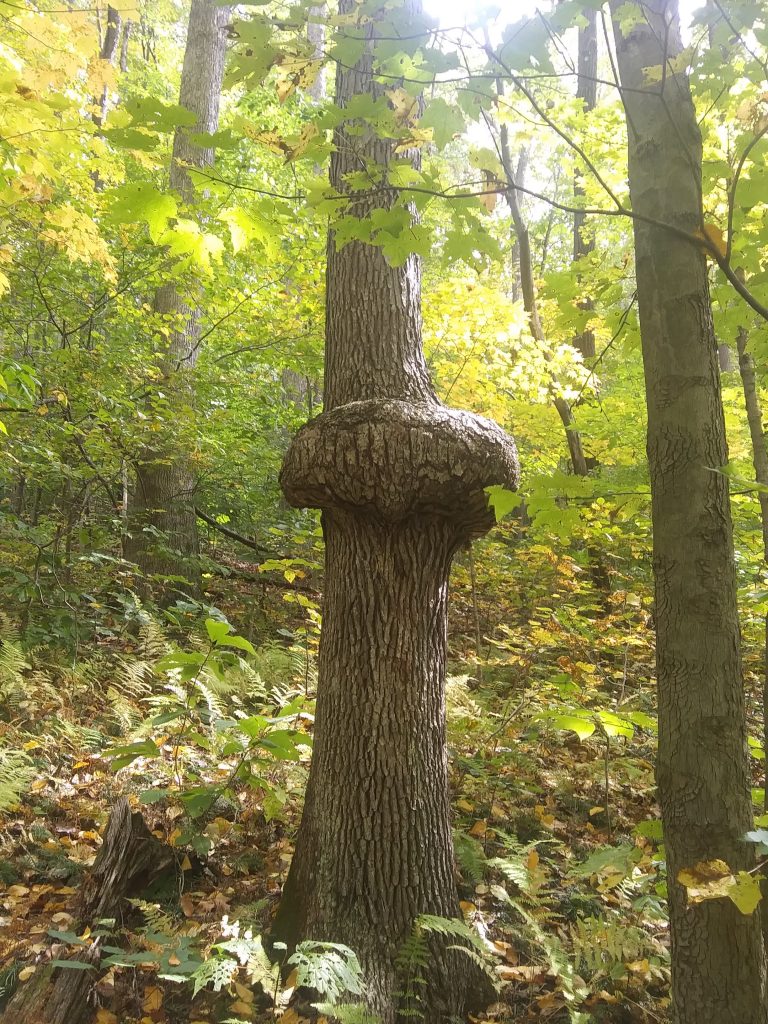
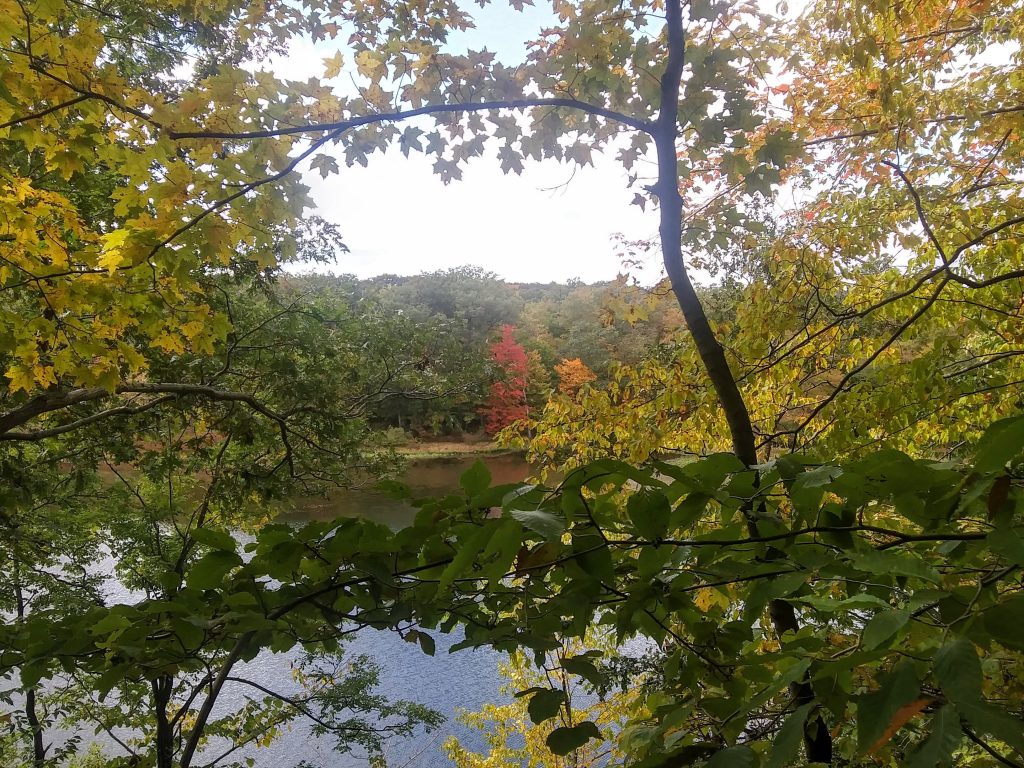
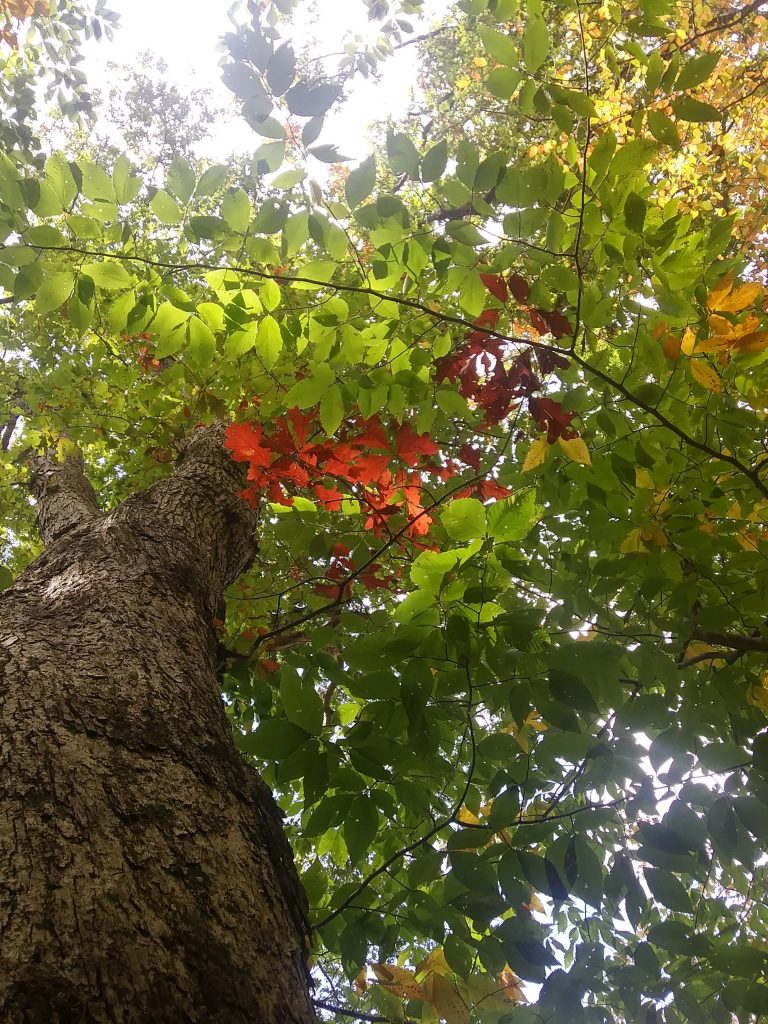
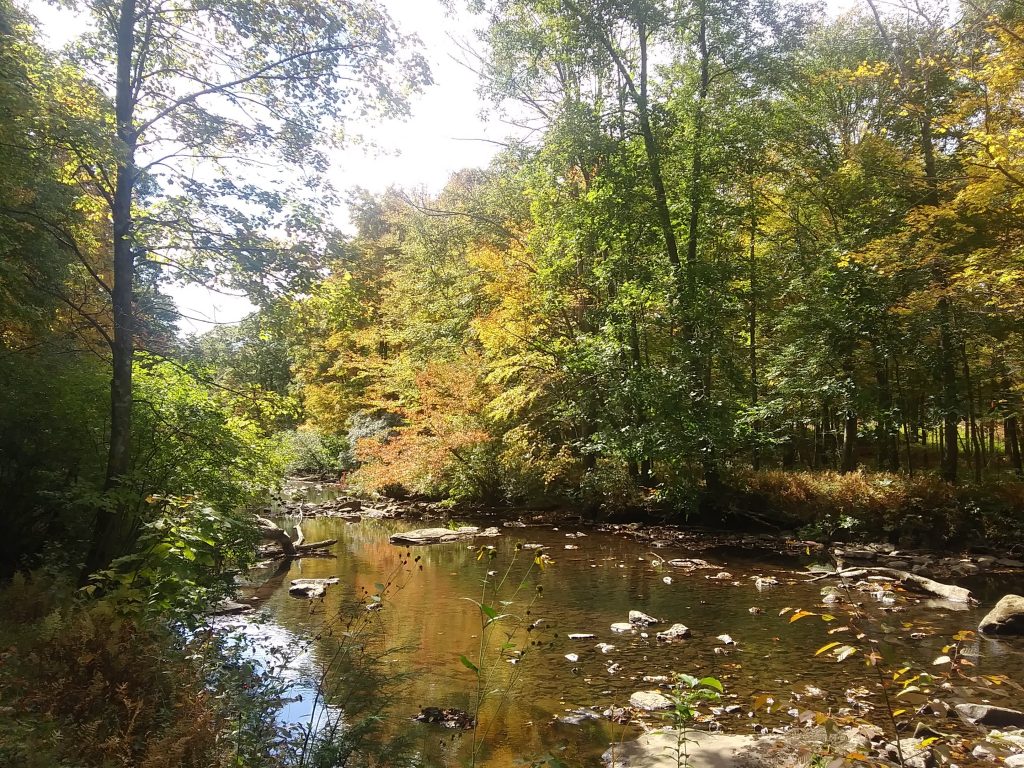
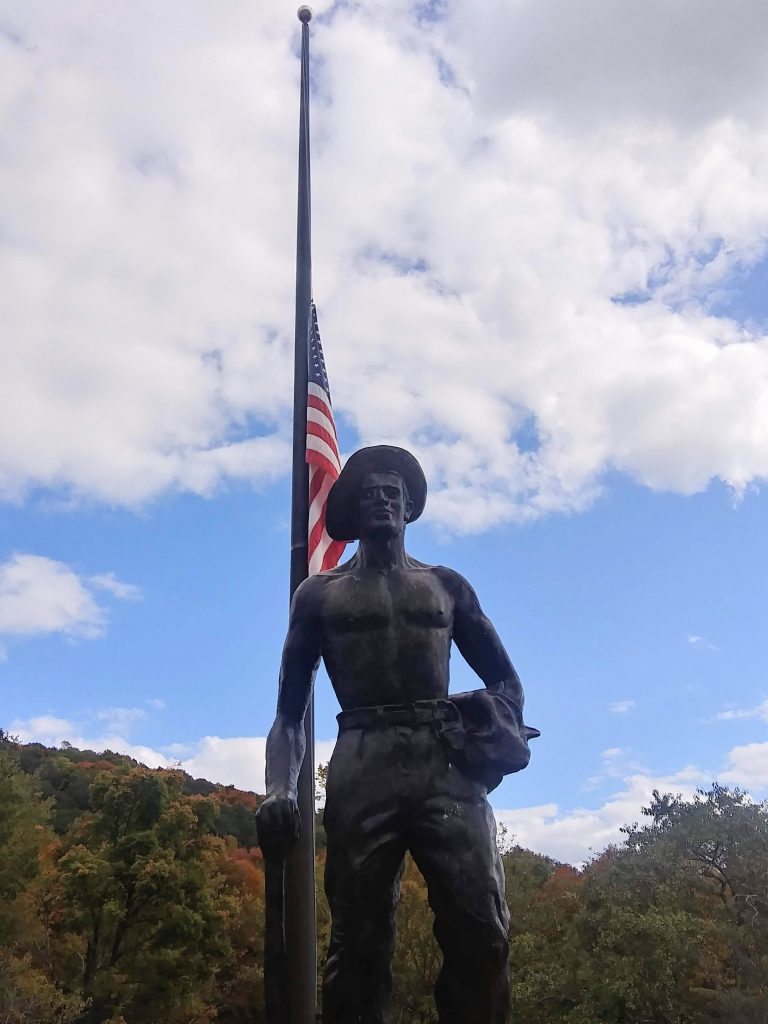
Recent Comments